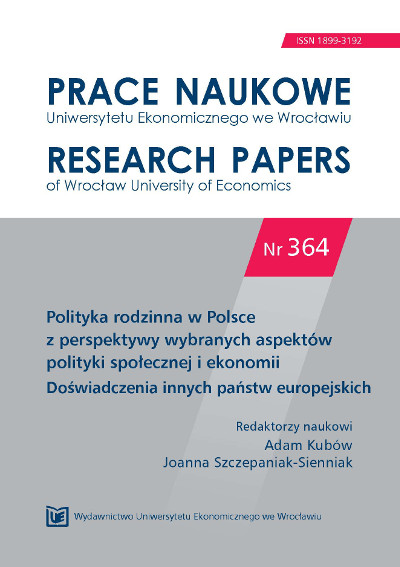Modele dzietności względem zmiennych rynku pracy w miastach 100-tysięcznych i większych w pierwszej dekadzie XXI wieku
Fertility models in relation to variables of the labour market in Polish cities of 100 thousand and more inhabitants in the first decade of the 21st c
Author(s): Małgorzata WróbelSubject(s): Economy
Published by: Wydawnictwo Uniwersytetu Ekonomicznego we Wrocławiu
Keywords: fertility; total fertility rate; labour market variables; correlation and regression; Polish cities
Summary/Abstract: The aim of this case study is to verify the hypothesis: 1) that the percentage of the unemployed with benefit eligibility within the total number of unemployed significantly determines the fertility rate in Polish cities of 100 thousand and more inhabitants in the years 2000-2010; 2) that the percentage of the unemployed with higher education within the total number of unemployed significantly determines the fertility rate in Polish cities of 100 thousand and more inhabitants in the years 2000-2010. The fertility of women is defined by the total fertility rate (TFR). This case study uses a regression and correlation analysis, by creating linear and multinomial models of the fertility rate. The analysis confirms the correlation between variables of a linear and non-linear character, in the researched cities.
Journal: Prace Naukowe Uniwersytetu Ekonomicznego we Wrocławiu
- Issue Year: 2014
- Issue No: 364
- Page Range: 96-112
- Page Count: 17
- Language: Polish

